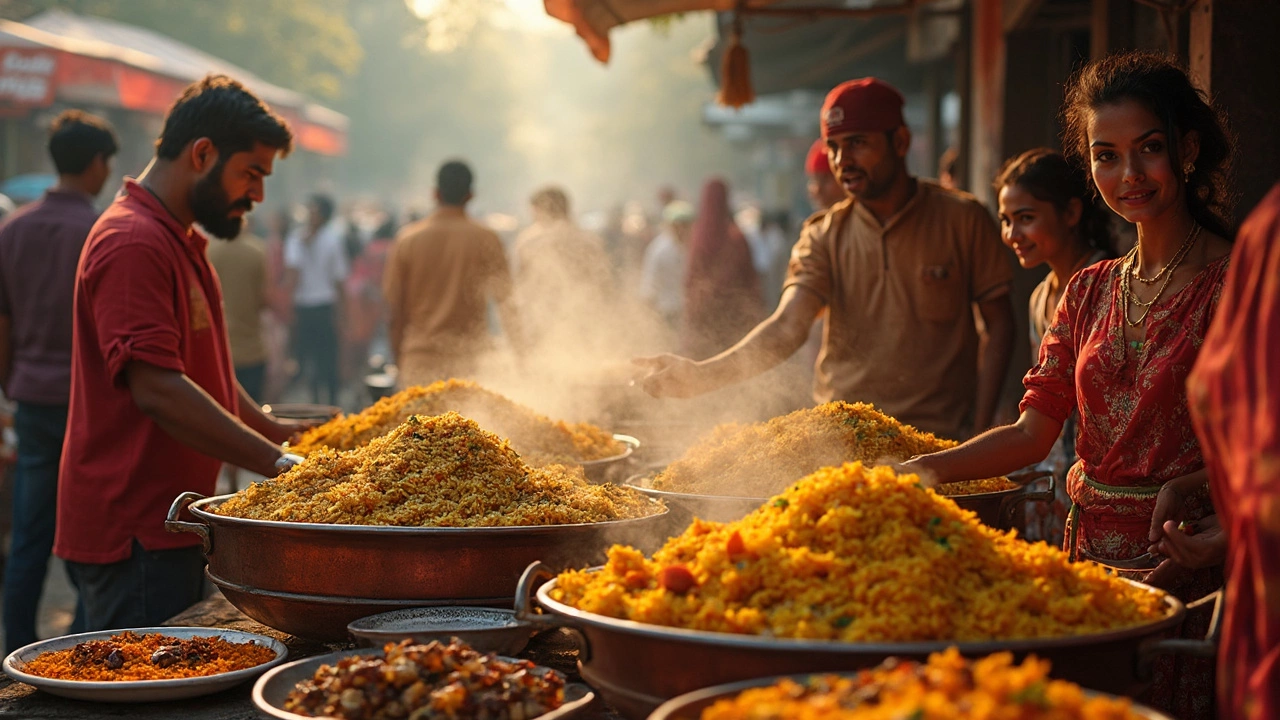All About Biryani: History, Varieties, and Simple Home Cooking Tips
If you love a fragrant bowl of rice mixed with meat or veggies, you’ve probably tried biryani. This dish isn’t just food – it’s a celebration of flavor that travels across India and beyond. Let’s break down where biryani comes from, why each region cooks it differently, and how you can whip up a tasty version in your kitchen without a fancy chef.
Where Biryani Started and How It Spread
Biryani traces its roots to Persian pilaf, brought to the Indian subcontinent by traders and Mughal rulers. The name itself comes from the Persian word birinj (rice). Once in India, the dish absorbed local spices, cooking methods, and regional ingredients, turning into the many styles you see today. From the royal kitchens of Hyderabad to the street stalls of Kolkata, each area adds its own twist.
Popular Regional Styles You Should Try
Hyderabadi Biryani is the most famous. It layers marinated chicken or mutton with partially cooked rice, then cooks everything together in a sealed pot (the dum method). The result is a juicy, spiced meat that seeps into each grain.
Lucknowi (Awadhi) Biryani stays milder. Instead of direct cooking, the meat and rice are cooked separately, then layered and steamed. The flavor is subtle, with a buttery aroma from saffron and ghee.
Kolkatta Biryani swaps yogurt for poppy seeds and raisins, giving it a slightly sweet and nutty taste. It often uses boiled eggs and potatoes for extra texture.
South Indian Biryani (like Tamil Nadu’s dhosa biryani) adds coconut, curry leaves, and sometimes tamarind. The result is a tangy, slightly sour note that balances the heat.
Each version follows the same basic steps – marinate, partially cook rice, layer, and seal – but the spice mix, herbs, and extra ingredients change the personality of the dish.
Quick Tips for Making Biryani at Home
1. Use the right rice: Long‑grain basmati with a low starch content gives fluffy grains that won’t stick together.
2. Rinse and soak the rice for at least 30 minutes. This removes excess starch and helps the grains stay separate.
3. Marinate meat properly: Yogurt, ginger‑garlic paste, and a mix of coriander, cumin, and red chili powder do the trick. Let it sit for at least an hour, preferably overnight.
4. Control the heat: Start cooking on high to bring the pot to a boil, then lower to a gentle simmer. Use a tight‑fitting lid or seal the pot with dough to trap steam.
5. Add aromatics at the right time: Whole spices like cardamom, cloves, and bay leaves go in at the beginning. Saffron soaked in warm milk should be drizzled over the top just before the final steam.
6. Don’t overcook the rice: Aim for 70‑80% done before layering. The final steam will finish the cooking without turning the rice mushy.
7. Rest before serving: Let the biryani sit covered for 10‑15 minutes after the heat is off. This lets flavors settle and makes it easier to serve neat portions.
With these basics, you can experiment. Try a vegetarian version with paneer, mushrooms, and vegetables, or swap chicken for seafood if you’re near the coast. The key is balance – heat, aroma, and the right texture of rice.
So next time you’re craving something comforting yet festive, give biryani a try. It’s a dish that lets you travel through India’s history with every bite, and you don’t need a professional kitchen to enjoy it.
